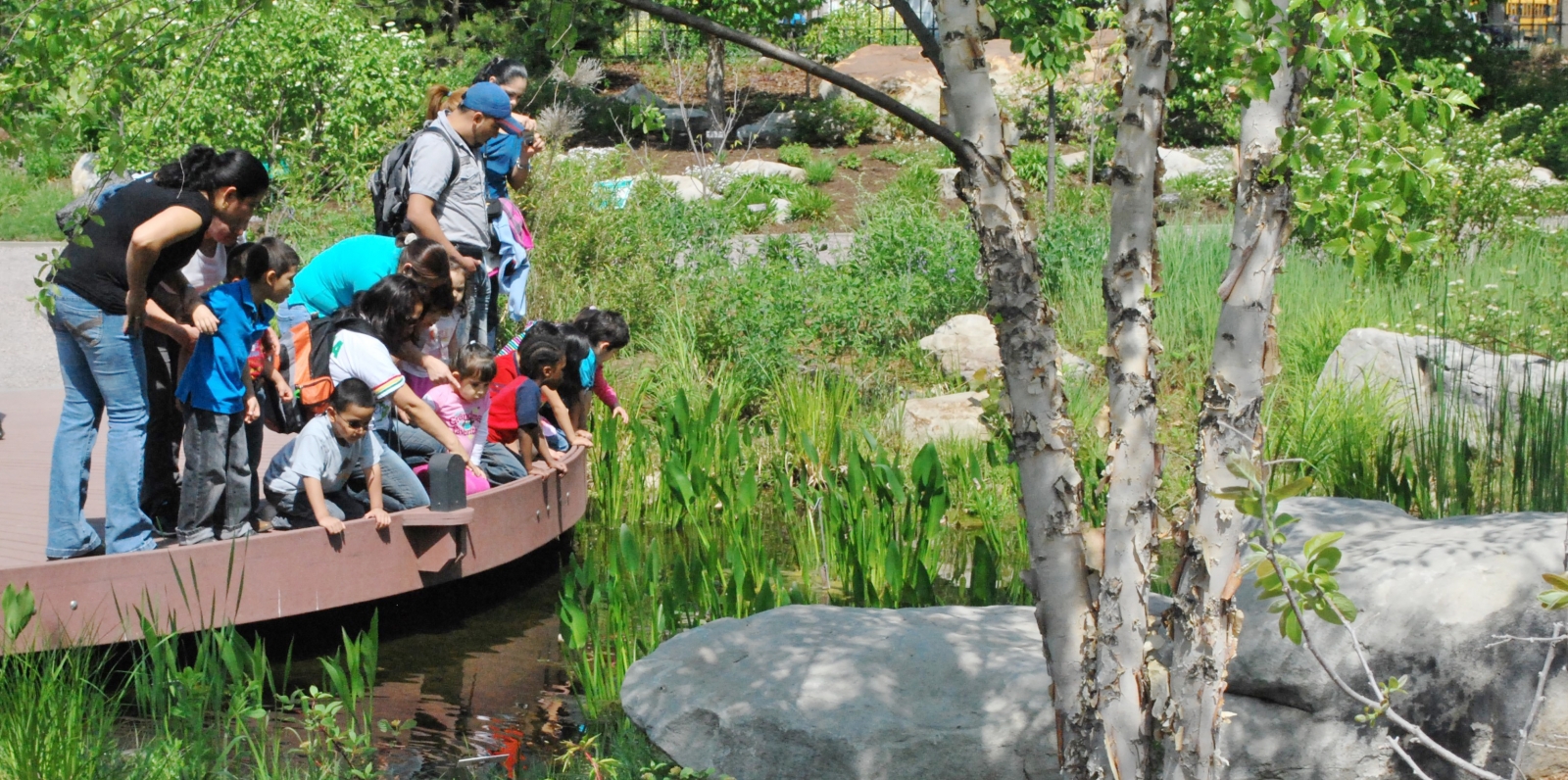Learn about the types of field trips offered by the U.S. Botanic Garden and register your class or students for a trip. There is no cost associated with our field trips or field trip resources but registration is required. We look forward to your visit!
Find your field trip:
On-site Instructor-Led Lessons are fully booked for the 2025-26 school year. You can join the waitlist, and we recommend exploring the Self-Guided and Virtual Options.
Self-Guided Exploration
Self-guided student groups are welcome in the Garden during opening times (10:00 a.m. – 5:00 p.m. daily), though we ask you register your group in advance. Note: these visits are teacher/chaperone-led and do not involve Garden employees.
On-Site Activity Resources are available to support your exploration of our gardens. Please download the resources in advance of your visit and review our Field Trip Logistics to understand our policies and guidance on chaperones, transportation, food, and more.
Register your self-guided exploration

On-site Instructor-Led Lesson
- Lessons led by U.S. Botanic Garden educators
- 90 minutes with time for classroom lessons and self-guided exploration
- Suitable for 15-50 students
- Offered on Wednesdays, Thursdays, and Fridays
Garden employees will not lead the self-guided portion of the trip. Please review our Field Trip Logistics to understand our policies and guidance on chaperones, transportation, food, and more.
On-site Instructor-Led Lessons are fully booked for the 2025-26 school year. You can join the waitlist, and we recommend exploring the Self-Guided and Virtual Options.
Lesson Descriptions
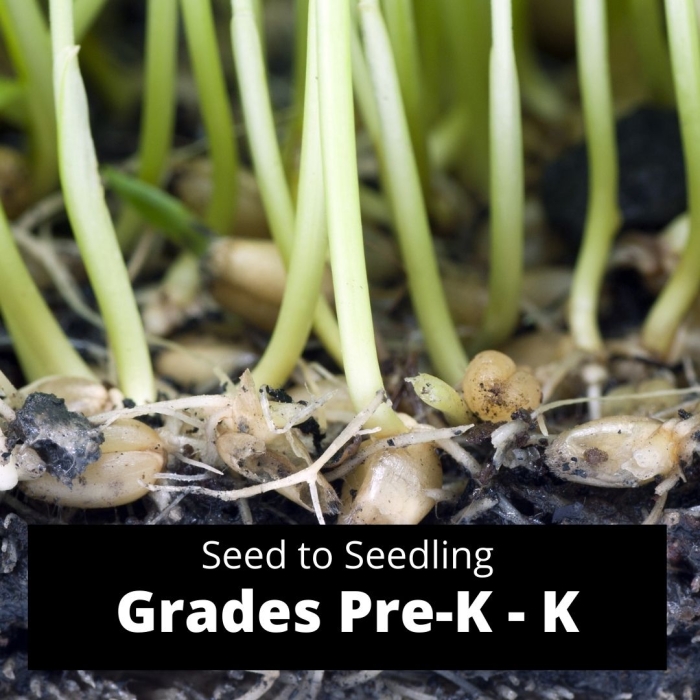
Pre-K-K: Seed to Seedling
Students explore seed germination, and what seedlings need to survive.
- K-LS1-1. Plants need water and light to live and grow.
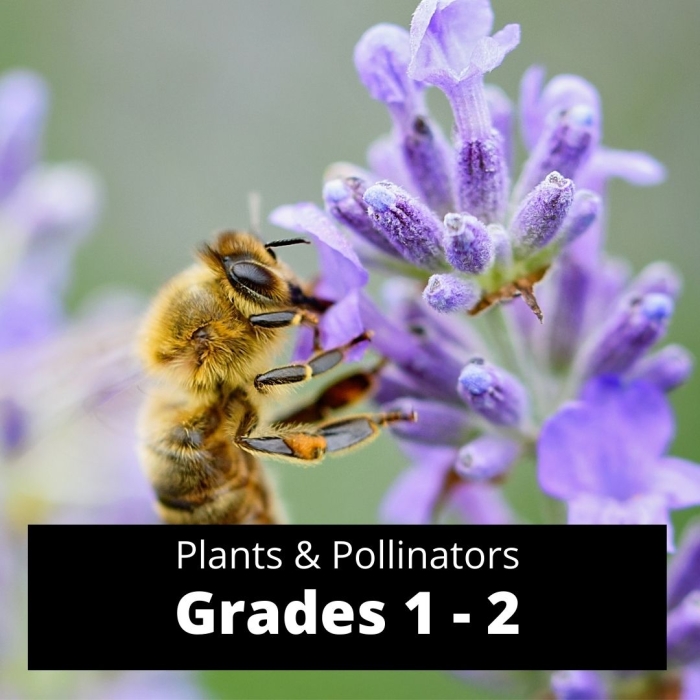
Grades 1-2: Plants and Pollinators
Students use dissection to understand the purpose of a flower. They then use a model to explore the relationship between plants and pollinators.
- 1-LS1-1. Use materials to design a solution to a human problem by mimicking how plants and/or animals use their external parts to help them survive, grow, and meet their needs.
- 2-LS2-2. Develop a simple model that mimics the function of an animal in dispersing seeds or pollinating plants.
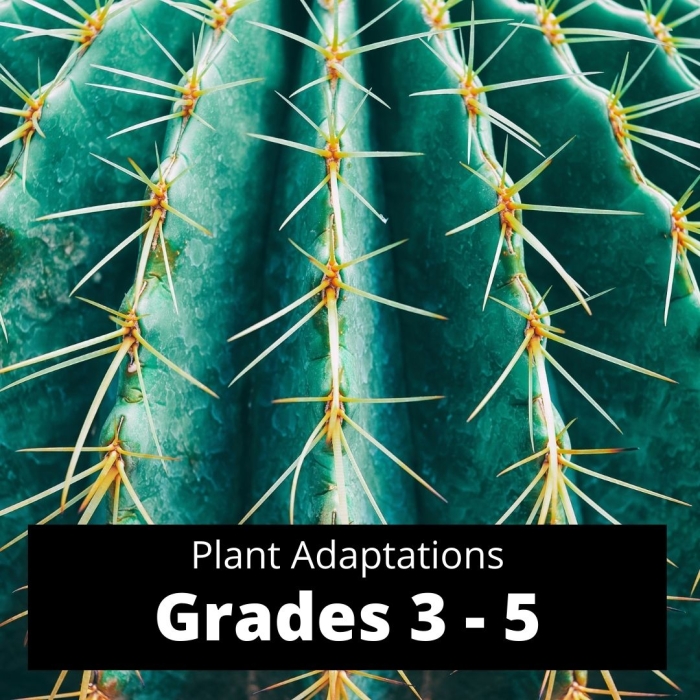
Grades 3-5: Plant Adaptations
Students explore how plants have adapted to survive the challenges in their environments.
- 3-LS3-2. Use evidence to support the explanation that traits can be influenced by the environment.
- 4-LS1-1. Construct an argument that plants and animals have internal and external structures that function to support survival, growth, behavior, and reproduction.
- 5-LS2-1. Develop a model to describe the movement of matter among plants, animals, decomposers, and the environment.
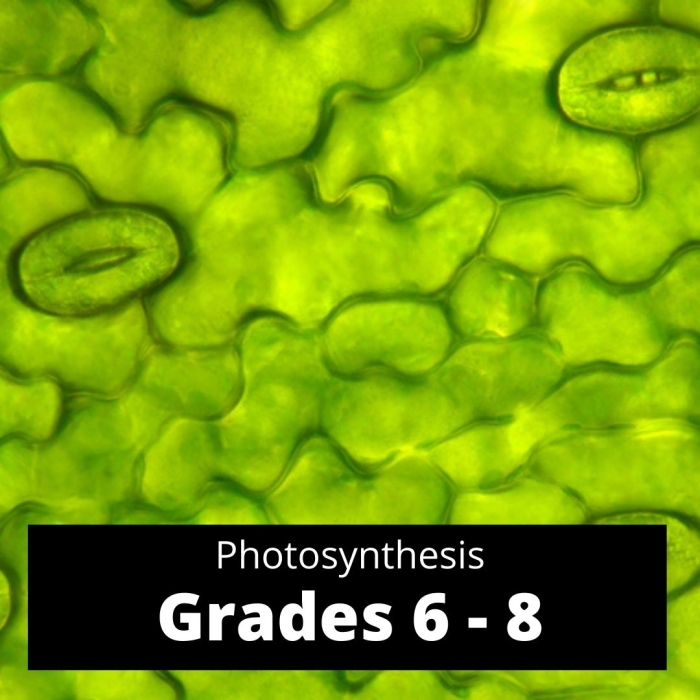
Grades 6-8: Photosynthesis
Students use microscopes and refractometers to understand how plants make their own food.
- MS-LS1-6. Construct a scientific explanation based on evidence for the role of photosynthesis in the cycling of matter and flow of energy into and out of organisms
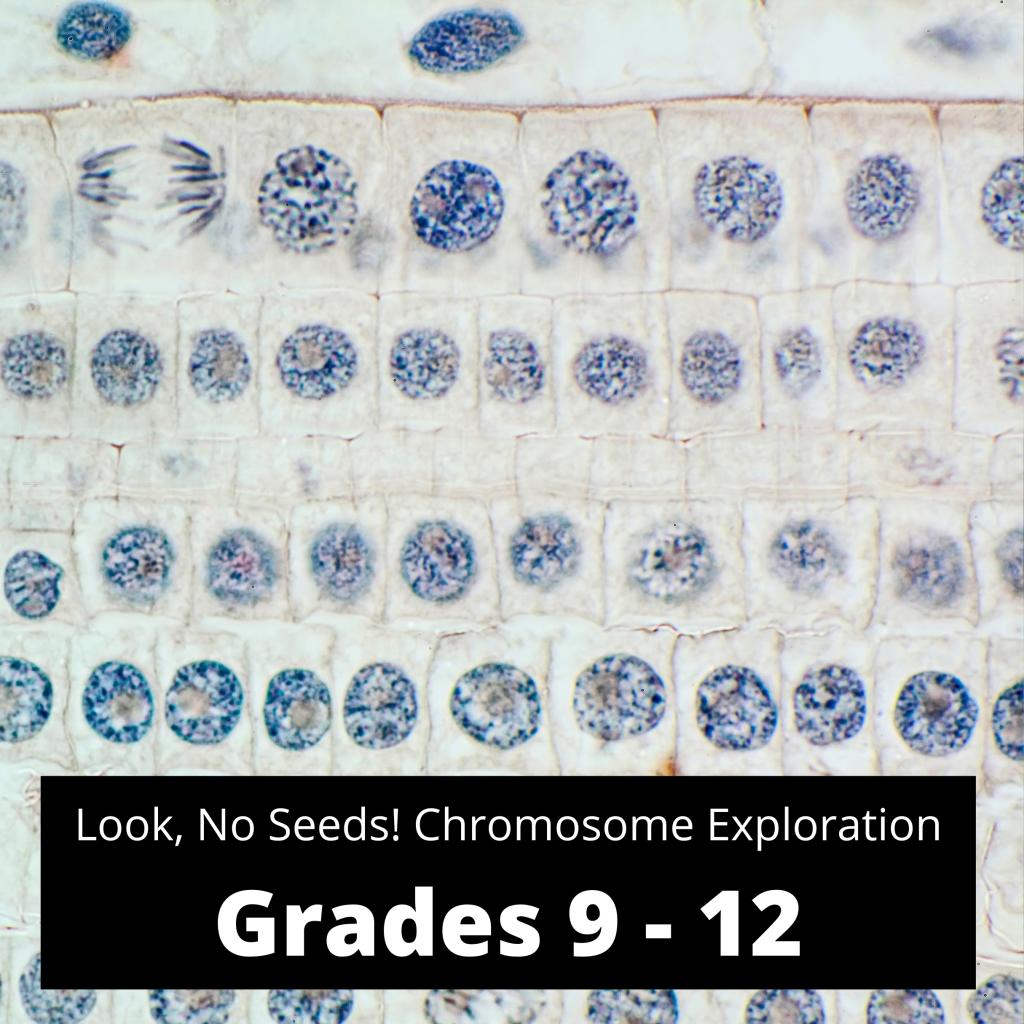
Grades 9-12: Look, No Seeds! A Chromosome Exploration
Students work together to dissect a fruit and extract the DNA from within its cells. Then, students build models of the meiosis process to better understand why some plants don’t produce seeds.
- HS-LS3-1. Ask questions to clarify relationships about the role of DNA and chromosomes in coding the instructions for characteristic traits passed from parents to offspring.
Join the Waitlist for Instructor-Led Field Trips
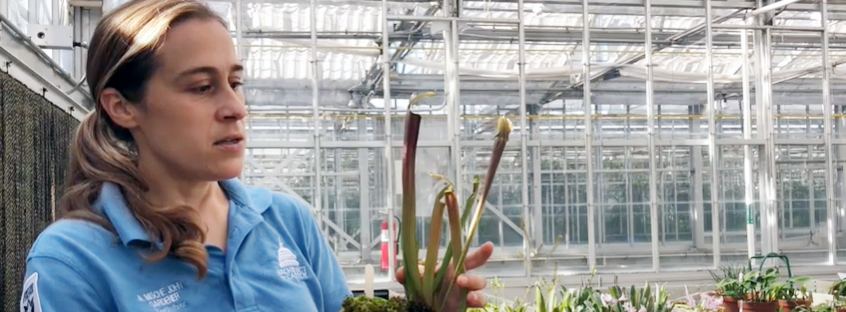
Virtual Field Trip
- Live, Instructor-Led
- 45 minutes
- Suitable for 15-50 Students
- Offered on Wednesdays
These immersive, interactive virtual field trips take students behind the scenes for a close-up look at our plant collection. Students learn the science of how plants work from specialists who study and care for these plants. Time is selected by teacher at time of registration. To learn more, please review our Virtual Field Trip Technology Guide [PDF].
Lesson Descriptions
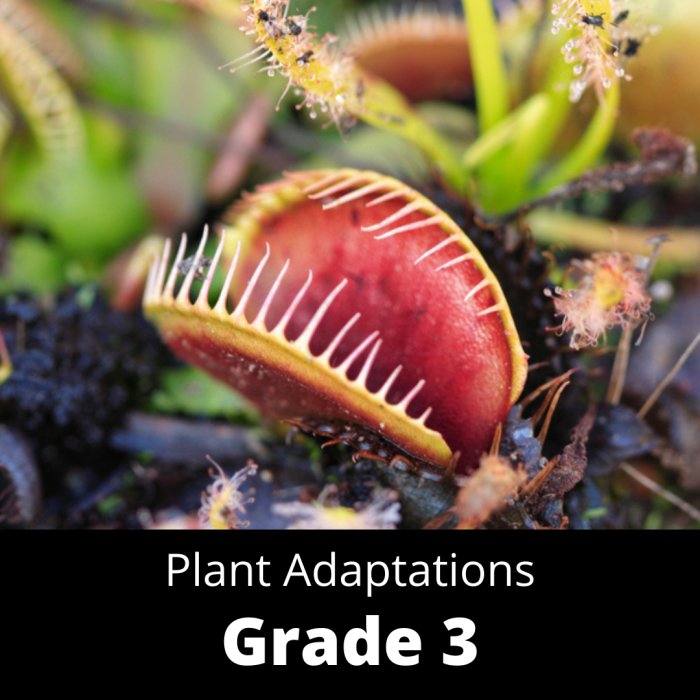
Grade 3: Plant Adaptations
Students investigate the connection between the environmental challenges plants face and their adaptive traits. In their investigation, students focus on constructing explanations for why plants have certain traits given the conditions of their growing environment. Why do bog-dwelling carnivorous plants trap insects? Let’s figure it out together!
- NGSS: 3-LS3-2 - Heredity: Inheritance and Variation of Traits: Use evidence to support the explanation that traits can be influenced by the environment.
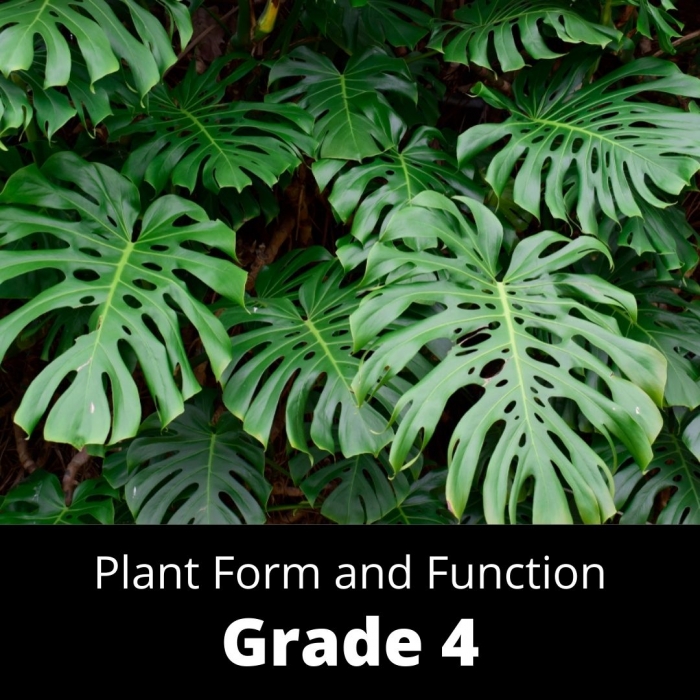
Grade 4: Plant Form and Function
Students explore plant form and function, and construct arguments for how external structures help plants survive challenges in different environments. How do the holes in the leaves of the swiss cheese plant help it survive in the rainforest? Let’s figure it out together!
- NGSS: 4-LS1-1 - From Molecules to Organisms: Structures and Processes: Construct an argument that plants and animals have internal and external structures that function to support survival, growth, behavior, and reproduction.
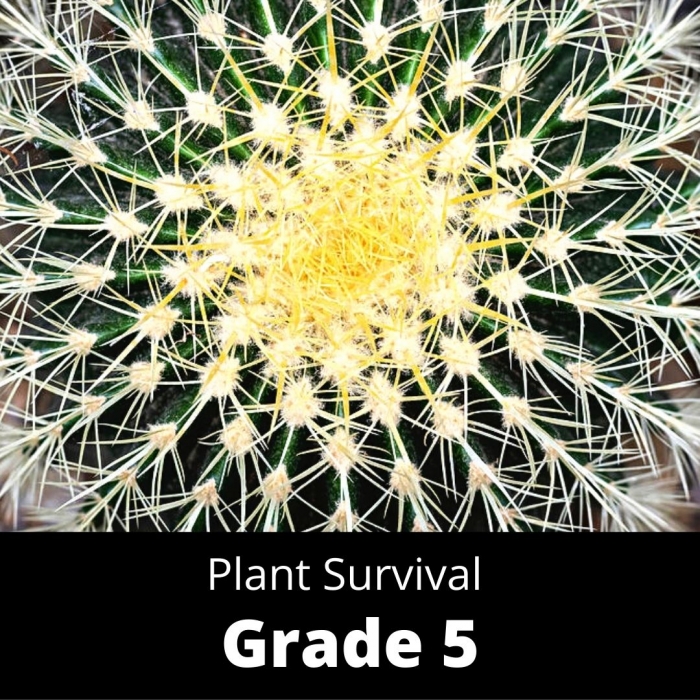
Grade 5: Plant Survival in Challenging Environments
Students investigate how plants obtain necessary matter and energy in different challenging environments. If cactus leaves are spines, where does photosynthesis take place in most cacti? Let’s figure it out together!
- NGSS: 5-LS2-1 - Ecosystems: Interactions, Energy, and Dynamics: Develop a model to describe the movement of matter among plants, animals, decomposers, and the environment.
